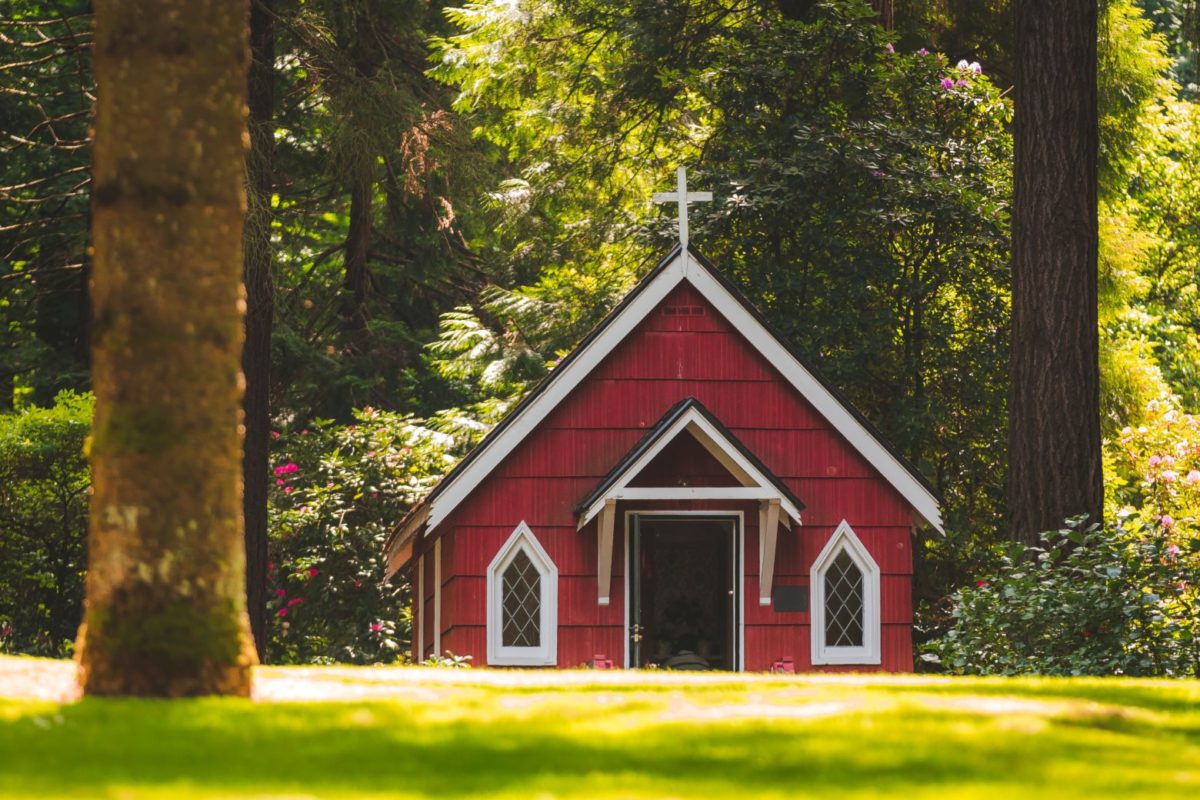What is a small church? This question has been on many people’s minds lately, as small churches seem to be trending.
But what does this mean, exactly? And why is it trending? Here we’ll explore the definition of a small church and discuss some benefits of attending one. Or starting one!
We’ll also look at some of the reasons why this trend is on the rise.
What Is A Small Church?

A small church is a place of worship that sees fewer than 200 people in attendance on Sunday mornings. The data says the average attendance in 85% of churches is less than 150.
There is often a focus on youth ministries. Although sometimes led by someone without formal biblical education, children’s church ministries are frequently run by volunteers who desire to share their love for the Gospel with kids.
Reasons Small Churches Are Trending
There are six main trends and cultural issues that have an impact on how the church interacts with its members and community. This may also help explain small church growth in the U.S.
Mobility
Traditionally, farmers would travel only a few hundred meters to get to areas of their farm that were formerly close by. For climate, ranches use both summer and winter ranges in various states. Small communities travel to cities for shopping, socializing, and church services.
It’s becoming more and more common for people to bypass traditional churches in favor of new, trendy ones. Even small churches in rural areas need to work hard to stand out from the crowd. They need to figure out who they want to reach, how they can attract people, and keep them engaged.
Multiple Social Centers
The church was often the social center in many smaller communities. People crowd churches to hear gospel singers or itinerant evangelists because it was the only social event available. Many families are dissatisfied with the number of social events provided nowadays, and we know that engagement is an important factor for sustained growth.
Adults can participate in Lions, volunteer firehouses, softball, bowling, and golf leagues. For youngsters, there are swimming meets, Little League baseball games, youth soccer clubs, Boy Scouts, and Camp Fire Girls. People’s spare time has dropped by one-third since the early 1970s, leaving contemporary families little time for religious practices.
Even people who are already church members find it difficult to attend gatherings today. It’s even harder to attract non-churchgoers. Churches are no longer communal hubs where everyone gathers. The small church must reconsider its evangelistic initiatives if they want to gain new members.
Poverty
While poverty is often considered an inner-city issue, it affects families in rural and non-metropolitan areas just as much. The percentage of low-income families receiving aid varies greatly depending on where they live. Inner-city households below the poverty level receive 50% more aid than rural families.
Smaller communities place a higher value on community assistance than governments. The church must be sensitive to people’s financial concerns and eager to assist them in spreading the Gospel. For both urban and rural churches, social activism is important.
Deacon’s dollars, food baskets during the holidays, special contributions for low-income families, gifts for kids, clothing swaps where outgrown clothing can be donated, and other methods a lesser church may express Christ’s love while also touching its neighbors.
Economic Changes
The economies of many little villages have evolved. Agriculture and timber employment is declining, and fewer people are coming to work in them. Due to tourism, service, and other business prospects, new residents and economic forces have arrived.
Once-isolated towns have become bedroom communities. This altered the population’s mentality and culture. The people were formerly homogeneous, but they are now diverse. Newcomers come with new concepts that are putting traditional patterns to the test. People must be assisted in navigating through music, Bible versions, behavioral norms, and preconceptions.
Leaders must effectively communicate the importance of uniting in Christ and the necessity of treating others with respect. Leaders need improved conflict resolution skills as various religions clash in people’s agendas, worship styles, and worldviews.
Population Changes
In the last century, there has been a significant shift in the population, which changed how few church ministers. In 1900, 39% of people lived on farms, while now only 1.9% live on them. Although more people are living in rural areas- 45 million in 1990 to 68 million presently – the number is not as high as those who lived on farms previously.
From 26.3% to 28.8%, the rural population has increased in 20 years, giving churches more opportunities for evangelism. The challenge lies in getting new members involved in the life and ministry of a congregation largely made up of people who have been there for generations and are steeped in tradition.
Newcomers are more influenced by popular culture than long-term residents. They may find a church uninteresting not because of its theology or activity but because of the congregation’s political and social views.
Small Church Growth Movement
This shift has had a huge impact (both good and bad) on small churches. It’s made us more aware of evangelism and outreach. It’s taught us the importance of understanding our community and those who don’t yet attend church—spreading the Gospel.
One downside is that it has portrayed ministry success as achieving numbers instead of focusing on personal growth. They often get discouraged when a church or pastor doesn’t see results. Additionally, some churches’ successes have raised the expectations for congregations and pastors- if there isn’t numerical growth, people tend to blame either the pastor or the congregation.
We should recognize the church-growth movement’s service while avoiding its negative consequences. We must be more evangelistic, but we must also recognize that salvation comes through God’s initiative rather than human effort and the convicting power of the Holy Spirit instead of great plans.
Our focus should turn from the outcomes of evangelism (which are God’s domain) to simply spreading the word faithfully (our responsibility). We must ask ourselves whether or not we’re comfortable discussing our beliefs with those around us.
Conclusion

A Rubik’s cube is a good reminder of the difficulties involved in being a small church leader. The more the leader tries, the more perplexed it becomes. It isn’t easy to fit everything into a clear structure and ministry architecture. The initial concepts can assist the leadership of tiny congregations. Small churches need varied leadership skills, which the pastor must understand.
The small church pastor’s work should be guided by love and acceptance, regardless of the faith. Accepting a tiny church implies understanding its mission. To understand it, church leaders with discernment study the congregation’s values, beliefs, practices, customs, and attitudes.
Like his larger church counterpart, the small church pastor must preach, lead, and disciple. In a small church, success is achieved when the pastor accepts people as they are and respects their religion. His love and understanding will allow him to have a tremendous ministry in the little congregation.
FAQs
How Many Of The Churches Are Small?
The present proportion of small churches is 65%. Fewer churches have experienced significant growth in the last five years. In 2000, 53% of congregations increased by 5% or more. It has decreased since peaking at 36% in the previous FACT study.
What Makes Mega Churches So Well-Liked?
The appeal of megachurches is that they cater to “casual” worshippers. Despite their large congregational numbers, many huge churches fail to educate their members properly. According to the Hartford Institute for Religion Research, the biggest American megachurch has 16,800 seats.
What Are The Churches Of The New Generation?
The “New Generation” churches emerged at the turn of the twentieth century in response to individuals experiencing rejuvenation through prayer, miraculous healings, and an enthusiasm for outreach and evangelism. These established institutions of Eastern churches could not support this influx of activity.
Related Articles:

